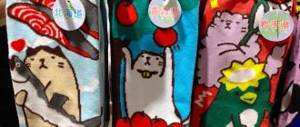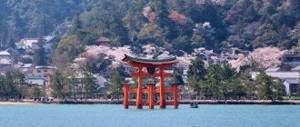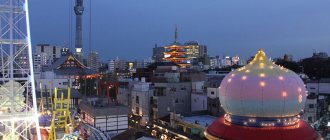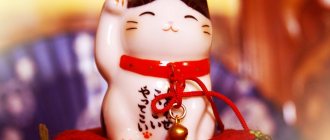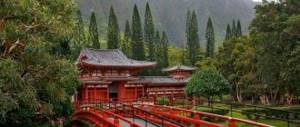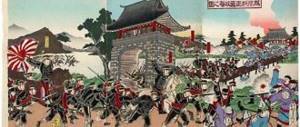Japan is a very unusual country with a rich past and an equally interesting present. That is why even those people who know almost nothing about Japan dream of visiting the mysterious Land of the Rising Sun or at least getting some special Japanese souvenir from there. When you go to Japan, you won't be able to return without gifts for your loved ones. And, probably, you will even decide to do something nice for yourself and buy something that will help preserve pleasant memories of a country that you will definitely want to return to again.
If you don’t know where to start looking for the perfect gift and what is the best thing to bring from Japan, then we will please you - in this article you will find souvenir ideas for everyone: from traditional gifts to more modern ones.
Some of the most popular gifts, without which you simply cannot leave Japan, are, of course, food and drinks. Japan is a country that is ideal for those with a sweet tooth, so when choosing an edible souvenir, you should pay attention to unusual Japanese sweets. If you or someone you know likes something more traditional, then you can safely take wagashi (和菓子 ー wagashi). Wagashi are Japanese sweets depicting the seasons or Japanese landscapes, made from natural ingredients: sweet beans, chestnuts, rice or tea. They are traditionally served during the tea ceremony. Another dessert is dorayaki (銅鑼焼きーdorayaki). It consists of two round sponge cakes with a filling of pureed sweet anko beans placed between them. Because of its round shape, it received its name, which literally translates as “fried gong.”
Another traditional treat that you can bring as a gift is senbei rice crackers (煎餅ー senbei). They are usually eaten as dessert with matcha green tea. They can be sweet, sprinkled with sugar syrup, or salty or even spicy, which are sometimes wrapped in nori seaweed leaves. Senbei also comes in different forms, for example, round thin snacks or small rice sweets fried on the grill. They cost about 150 yen, so before you buy them as a gift, you can try different flavors and decide which one you personally like.
Among modern sweets, Kit-Kat is the best choice for a gift. If in the CIS countries you can find only 2-3 types of Kit-Kat, then in Japan the number of different flavors reaches 25 varieties! The most unusual ones are: matcha tea, sakura-flavored, sake, and you can also find Kit-Kat with sweet potato flavor, which will need to be baked before consumption. You can also buy umaibo corn sticks (うまい棒 ー umaibō) as a souvenir. These snacks also come in different flavors: octopus, tonkatsu sauce, curry, etc.
Kit-kat
Umaibo
If you love tea, then Japanese matcha tea will be a revelation for you. Matcha (抹茶ー matcha) is a powdered green tea that can be brewed in either hot or cold water. It is used in the traditional tea ceremony and added to desserts and other dishes. You can buy a whisk to accompany the tea, because this is the method of preparation that is used in the ceremony and is believed to give the tea a special taste. Another type of tea that is less known but has an equally interesting taste is mugicha (麦茶 ー mugicha). It is made from roasted wheat or barley grains, which are brewed and drunk after the drink has cooled. Like matcha, it can be found in the form of tea powder.
There are many different matcha-flavored desserts in Japan. In addition to Kit-kat, pay attention to other brands of chocolate with this tea. If you don’t really like such unusual additives, then ordinary Japanese chocolate has a very pleasant and rich taste. If you want to check it out for yourself, try Milky and Meiji brand chocolate. Everyone especially praises the latest brand's chocolates with almonds, called Almond. Pocky chocolate sticks will also be a great souvenir. In Japan you can find many more species of them than here.
Pocky
Among alcoholic drinks, sake is, of course, worth noting. The correct name for sake is nihonshu (日本酒ー nihonshu) ー traditional Japanese rice wine. But besides nihonshu, you can find other types of alcohol in Japan. For example, umeshu (梅酒ー umeshu)ー Japanese plum liqueur that has a pleasant sweet and sour taste.
If you are not a big fan of sweets, then another food option is tsukemono (お漬物 ー otsukemono). This is a special type of Japanese pickles: pickled ginger, daikon, chrysanthemum flowers, red maple leaves, plums, small transparent fish (素魚ー shirouo).
Otsukemono
The next souvenir is instant noodles (即席めんー sokuseki men). Japan is famous for its noodles, so most Japanese do not consider instant noodles to be unhealthy and eat them with pleasure. Compared to our noodles, Japanese noodles have a richer taste. In addition to traditional wheat noodles, you can also find buckwheat soba noodles, and the packages themselves contain real dried shrimp and naruto (a type of minced fish roll). The most famous manufacturer of such noodles is Cup Noodle.
If you or someone you know loves to cook, then rice sprinkles ー furikake (ふりかけー furikake) or salad dressings would be a good gift. Furikake is a dry mixture that is sprinkled on top of rice. In addition, it can be added to onigiri rice balls. Typically, furikake includes thinly cut sheets of nori, pieces of dried pickled plum, shrimp, salmon or crab. Among the sauces, the most popular is the sweetish sesame sauce. In addition to it, you can try citrus sauces: from Japanese ponzu lemon or yuzu mandarin.
Furikake
In addition to a variety of traditional Japanese sweets, each region of Japan has its own special type of edible souvenir. For example, in Tokyo you will find banana cakes. They are sold both in regular stores and in tourist places such as the Sky Tree tower. This dessert is called ー Tokyo Banana.
Gift giving (お土産ー omiyage) is very common in Japan. Therefore, a nice bonus for all Japanese sweets will be beautiful packaging, which you will want to keep as a souvenir after everything is eaten.
Tokyo Banana
More and more tourists come to Japan, especially to large cities, every year, so they try to make their stay comfortable. For example, the availability of tax free (consumption tax deduction) may be a pleasant surprise for you. In supermarkets like Don Quixote, if you go to the checkout for foreigners, where the coveted “tax free” is written, they will carefully pack all your goods (this will be especially true if you decide to buy a couple of bottles of sake) and deduct 8 %. For all this, do not forget to take your foreign passport with you to the store. This is where you will receive a receipt after your purchase, which you will then need to show at the airport.
Another useful and beautiful gift from Japan can be Japanese dishes. Japanese ceramics and porcelain (陶磁器ーtōjiki or 焼き物ーyakimono) are highly prized throughout the world.
Japanese ceramics
Japanese ceramics (陶芸ーtōgei) are some of the oldest in the world. In addition, it became even more widespread when tea ceremonies began to gain popularity in Japan. Despite the fact that all over the world they are trying to make the production of tableware more automated and old styles of tableware making are disappearing, Japanese craftsmen and the state itself are trying to preserve the traditional craft. Even if the process of creating ceramic and porcelain products becomes a little more modern, their appearance still retains its flavor.
Japanese ceramics
There are many trends in Japanese ceramics, but the most unusual look are imperfect and natural ceramic products with uneven edges and flowing glaze, and sometimes not covered with anything at all. The Japanese have always appreciated this beauty in modest simplicity. In Japan, this philosophy, which encourages finding beauty in imperfection, is called wabi-sabi. And if you don’t really like such sloppy things, you can find beautiful sets with Japanese motifs, made using more recent technologies.
Electronics
Of course, it makes sense to bring some technology and electronics from Japan. The most popular products are photo and video equipment, telephones, and televisions. The most popular brands are Sony, Panasonic, NEC, Fujitsu, Nikon, Canon, Nintendo, Toshiba, Pioneer, Sharp. Always check whether Japanese electronics will work in Russia, because much here is tailored to Asia.
To the delight of your fellow gamers, bring computer games and related gadgets from Tokyo - their selection is simply huge. And in hardware stores you can pick up gifts for all your loved ones: cool flash drives in the form of sushi or donuts, cases with Pokemon and other popular cartoon characters.
Where can I buy?
The widest selection is in shops and hypermarkets in the Akihabara metropolitan area. Equipment and electronics are brought here directly from factories, so prices are 20-30% lower than average, and you can also get discounts. In Osaka, go shopping for appliances in the Nippombashi area.
The advantage is that most electronics stores in Japan operate under a tax-free system. So expensive purchases will be very profitable for you.
Many tourists want to bring equipment, electronics and other goods in this category from Japan to Russia for sale. The idea is interesting, but you won’t get tax free for large shipments, so there’s practically no benefit.
Japanese porcelain
Porcelain dishes are not inferior in beauty to ceramic ones. After deposits of kaolin, from which porcelain was then produced, were discovered on the Japanese island of Kyushu, the porcelain industry in Japan began to develop rapidly. Japanese porcelain products are painted either with a blue and white pattern or with multi-colored patterns.
Japanese porcelain
Another unusual type of tableware that appeared in Japan during the Edo era is Edo Kiriko (江戸切子 ー edo kiriko) ー glass carving. Vases, bowls and cutlery made using this technology are often presented by Japanese Prime Minister Shinzo Abe as gifts to foreign representatives.
Edo Kiriko
Culture of souvenirs and return gifts
In addition to gifts for certain dates, such as o-toshidama
(envelope with money for children) for the New Year,
o-chugen
,
o-seibo
, gifts for Christmas, Valentine's Day, and give something for certain events in life. The birth of a child, the Shichi-go-san holiday, when children turn three, five and seven years old, entering and graduating from school, success in university entrance exams, coming of age, wedding, housewarming, moving to a new place and other life changes can't do without gifts. They also give gifts during visits on the occasion of illness or misfortune. At the funeral, as if to compensate for the price of incense for the memorial service, they give money in an envelope, send flowers or things - the choice depends on the appropriateness and nature of the relationship with the receiving party.
O-toshidama - an envelope with money given to children for the New Year
There is a custom of buying souvenirs, o-miyage
.
A person who goes on a trip or business trip buys local well-known goods, which he distributes to friends and colleagues upon his return. When visiting friends or relatives, they are given a box of sweets ( kashiori
) or something else as a gift, which is called
te-miyage
.
A feature of Japanese gift-giving customs is the tradition of giving something in return. Guests attending the wedding receive small hikidemono
.
After recovery, in gratitude for the visit during illness, they give kaikiiwai
, “a gift to celebrate the cure”; for gifts received congratulating on the occasion of the birth of a child, they send
uchiiwai
, “a gift to celebrate the birth”; participants in the funeral ceremony are given
kodengaeshi
, “a return gift for incense." It is considered good form to send such gifts as soon as possible. One of the manifestations of the tradition of reciprocal gifts is the appearance of “White Day” (March 14), when men seem to give back for chocolate received on February 14, Valentine’s Day.
Japanese knives
Japanese knives are widely known throughout the world for their quality and durability. And it’s not surprising, because Japan is a country of samurai, and some kitchen knives are still made using the same technologies that were used to create real samurai swords. On Japanese food streets you will definitely come across shops that specialize in knives, some of which will even have knives made in-house. You can also buy good branded knives in supermarkets. In terms of prices, they will be cheaper than ours, but the difference in quality will be impossible not to notice.
Japanese chopsticks
If your luggage is not so big, but you need to buy souvenirs for a large number of friends and acquaintances, then one of the most suitable options will be Japanese chopsticks (箸ー hashi). There are even separate stores that specialize only in chopsticks. You can find sticks made from different types of wood, with different patterns, and even sets for families: with sticks of different thicknesses and lengths, which will be packaged in fabric envelopes.
Lunch box
Food sticks
Another nice gift could be a lunch box called bento (お弁当ー obentō). With different numbers of compartments, sizes and designs, they are sure to please the recipient. There are even separate boxes for onigiri - traditional rice balls. The sets may also include chopsticks. In Japan you will find many budget options for such boxes.
If your budget is limited, then you can go to 100 yen shops (100 円ショップー 100 yen shoppu). In them you can find inexpensive, but at the same time cute chopsticks, lunch containers, and many other utensils, for example, molds for making onigiri. If you need to buy a lot of gifts, but there is not enough space in your suitcase, then you can also find vacuum bags in which you can pack things very compactly.
Japanese cosmetics (化粧品 ー keshōhin) will be a good gift for girlfriends, mothers, grandmothers, and maybe even some male acquaintances. Cosmetics from Japanese brands, which are now sold all over the world, can be bought in Japan at a better price, and there will be much more choice than outside the country.
If you understand good cosmetics and know what exactly you need, then just pay attention to the lines of brands such as Shiseido, SK-Ⅱ, Obagi, Kose Fasio, Ipsa and many others. In Japan, there are both quite expensive brands of cosmetics, as well as more budget ones, which will also please you with good quality. Most Japanese cosmetics are aimed at lightening the skin or combating age-related changes.
Japanese women do not use decorative cosmetics so often and prefer more minimalistic makeup, but despite this, mascaras, blushes and lipsticks of good quality and in very cute packaging are not difficult to find. If you want to buy just such cosmetics, then perhaps you will like brands such as Majolica Majorca, Isehan Kiss Me, Koji, Kate.
If you are not very knowledgeable about skin care products and decorative cosmetics, then you can buy Japanese fabric masks with images of samurai or kabuki masks. They will definitely lift the mood of the recipient.
But regular face masks would also be a good gift. They are very effective and thanks to the large selection, you can find a mask for any skin type that will definitely please you with the result. We would recommend masks from Lululun.
Fabric face masks from Lululun
Other interesting Japanese products that will help preserve beauty, remove signs of fatigue, slow down the aging process and much, much moreーthese are Japanese dietary supplements. Various vitamins, collagen, calcium, probiotics, hyaluronic acid - this is an incomplete list of what the Japanese add to small glass bottles or powders that can be found in every pharmacy and even a regular supermarket. Manufacturers promise the effect of constant use of such dietary supplements is simply incredible. In addition to all the properties described above, they also work as energy drinks and help cope with hangovers. It may sound a little unusual, but they are in high demand in Japan. We all know that the Japanese work a lot, like to drink on Fridays with colleagues, and Japanese women retain the appearance of a young girl for a very long time, and maybe the secret is hidden in such nutritional supplements. Therefore, such Japanese dietary supplements are often bought as souvenirs. And if you don’t really want to buy a whole course of one of the supplements, you can buy more interesting analogues, for example, rose-flavored candies with collagen or cookies that enlarge breasts (yes, such things exist in Japan!).
You might like Japanese squalene supplements. Squalene is shark oil, whose beneficial properties were first discovered by Japanese scientists. It helps fight cancer cells, strengthens the immune system, purifies the blood, balances hormonal levels and preserves youth.
Japanese dietary supplement with squalene
In addition, medicinal patches can be found everywhere in Japan. These are not ordinary plasters that we use to cover wounds. Japanese patches simply have enormous functionality: foot patches with ginseng will relieve fatigue from your legs at the end of the working day, a patch with rose helps maintain hormonal balance, another patch can help you restore your immune system, and the most promising one will remove toxins and waste from you overnight. In addition to patches, there are also very unusual masks, for example, an eyelid mask that smells soothingly of lavender and warms your eyes tired after working at the computer for a long time, or a mask that will help you fall asleep faster on an airplane. Even if they don’t help much, you or your friends will still gain new experience using the wonders of Japanese medicine.
Of course, the list of nice Japanese things that you want to take with you from the Land of the Rising Sun does not end there. The continuation of the article about souvenirs that you can bring from a trip to Japan is here.
If you are planning to visit Japan, we advise you to take our master class “Travel to Japan from A to Z” here.
And if you are just taking your first steps in learning Japanese, we recommend that you get free lessons on the Japanese Hiragana alphabet right now. To do this, fill out the form below ↓
Japan stores
In Japan, the concept of “trading” is unpopular; there are specialty shops and department stores. Japanese department stores essentially have the same assortment as shopping centers: clothing, shoes, accessories, cosmetics, groceries, etc., but the space is organized like a market. Typically, products are distributed across floors: cosmetics floor, shoe floor, jewelry floor, women's and men's clothing floors, restaurant floor, and the ground floor is usually occupied by food. Large department stores have a more detailed division - youth clothing, business clothing, plus size clothing, etc.
For shopping, it is better to choose a district rather than a specific department store, since goods of different price and other categories are usually concentrated in a certain quarter.
In the Shinjuku quarter in Tokyo there are the most expensive shops, in the Shibuya area - the kingdom of relatively inexpensive youth trendy clothing and accessories, and the most popular shopping district, where you can find everything, is Ginza, where the country's largest department stores "Mitsukoshi" and "Matsuya" are also located. "
On Omote-sando Street in Shibuya, the selection is about the same as in Ginza, but the prices are slightly lower, although it is not as luxurious. At the end of this street there is a small quarter of Harajuku, where all the punk chic of youth fashion is concentrated: from European Zara and Mango to the clothes of metalheads, emo, goths and “lolitas”, all the Japanese freaks and fashionistas hang out here, and you can buy torn Levis inexpensively. , fuchsia velvet jacket and Mickey Mouse earrings.
The epicenter of shopping in Osaka is the World Trade Center, which is located in the second tallest building in Japan (55 floors + 3 underground). There are not only shops, but also restaurants, entertainment centers, observation decks, etc.
The most popular shopping complex in Kyoto is The Cube. It is located underground, under the railway station and is interesting for its shops of original household goods, inexpensive restaurants (desserts deserve special attention), cosmetic stores, and here you can buy the most unusual costumes for Halloween.
Outlets in Japan
The largest outlets in Japan are located in the vicinity of Tokyo.
Gotemba Premium Outlets
- the largest and most popular outlet in Japan, on its territory there are more than 200 stores of local Japanese and famous world brands. This is a “village” type outlet, it is a small town divided into 2 districts by a river, across which there is a pedestrian bridge. Here all year round you can find discounts from 30 to 70%; the most generous offers here are always from sports brands - Nike, Adidas, Puma, etc., as well as from Lego and Sanryo toy stores.
You can get here from Tokyo by the Gotemba Premium Outlet Liner bus, which departs every day from Tokyo Station (Yaesu South Exit) and Shinjuku Station (New South Exit). Buses run once a day - in the morning to the shopping complex, and back in the evening (on weekends - twice a day). The journey will take about 1.5 hours, the ticket costs 1650 JPY one way, and a brochure with discount coupons is included with the ticket.
Shisui Premium Outlets
- a relatively new outlet, opened in April 2013 near Narita International Airport. There are about 120 stores here that offer discounts from 30 to 70%. You can get here by any transport that goes to Narita Airport.
